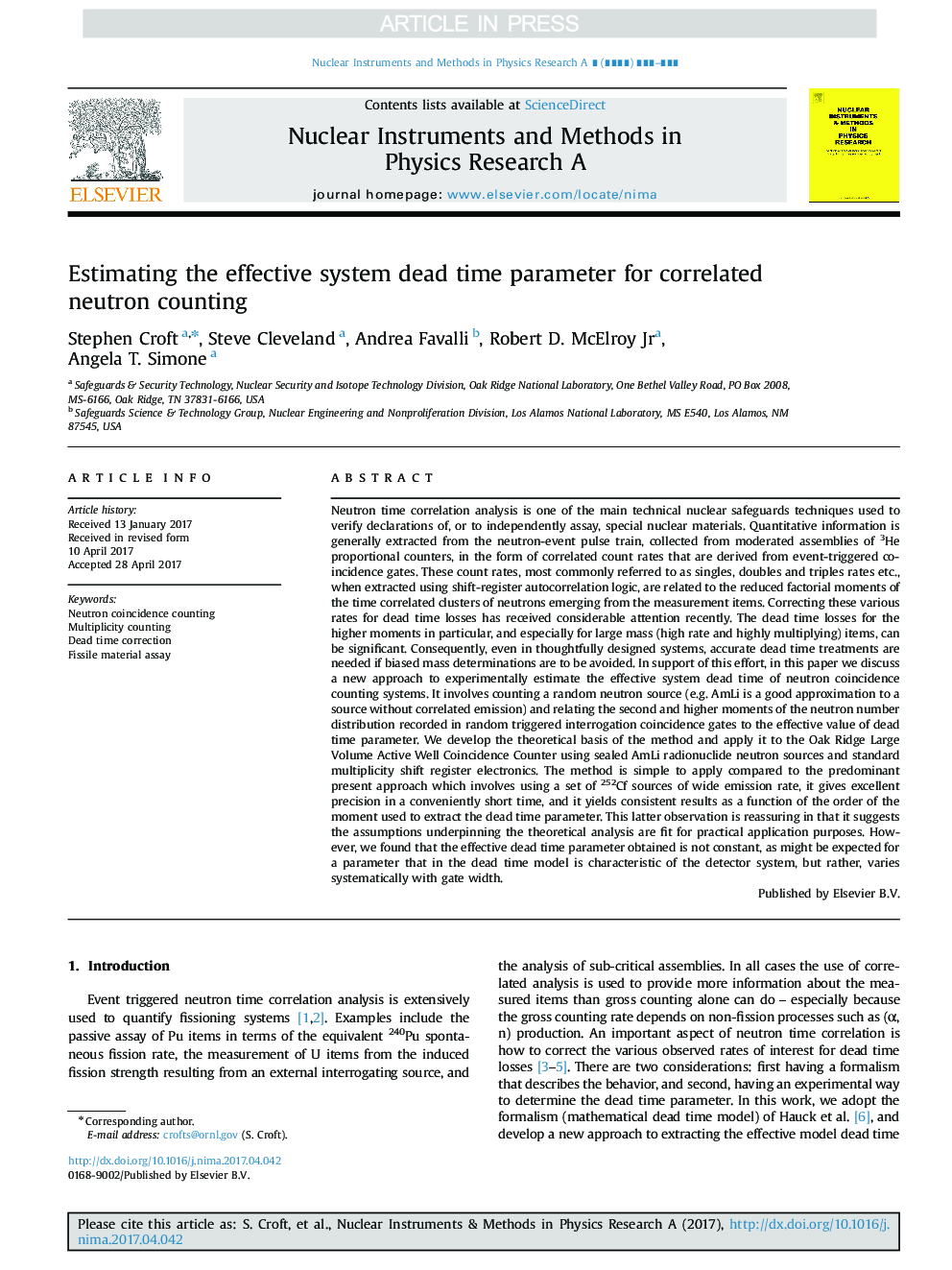| کد مقاله | کد نشریه | سال انتشار | مقاله انگلیسی | نسخه تمام متن |
|---|---|---|---|---|
| 5492564 | 1526255 | 2017 | 7 صفحه PDF | دانلود رایگان |
عنوان انگلیسی مقاله ISI
Estimating the effective system dead time parameter for correlated neutron counting
ترجمه فارسی عنوان
برآورد پارامتر زمان موثر سیستم مرده برای شمارش نوترون های همبسته
دانلود مقاله + سفارش ترجمه
دانلود مقاله ISI انگلیسی
رایگان برای ایرانیان
کلمات کلیدی
شمارش تصادفی نوترون، شمارش چندگانه، تصحیح زمان مرگ، تست مواد محرک،
موضوعات مرتبط
مهندسی و علوم پایه
فیزیک و نجوم
ابزار دقیق
چکیده انگلیسی
Neutron time correlation analysis is one of the main technical nuclear safeguards techniques used to verify declarations of, or to independently assay, special nuclear materials. Quantitative information is generally extracted from the neutron-event pulse train, collected from moderated assemblies of  3He proportional counters, in the form of correlated count rates that are derived from event-triggered coincidence gates. These count rates, most commonly referred to as singles, doubles and triples rates etc., when extracted using shift-register autocorrelation logic, are related to the reduced factorial moments of the time correlated clusters of neutrons emerging from the measurement items. Correcting these various rates for dead time losses has received considerable attention recently. The dead time losses for the higher moments in particular, and especially for large mass (high rate and highly multiplying) items, can be significant. Consequently, even in thoughtfully designed systems, accurate dead time treatments are needed if biased mass determinations are to be avoided. In support of this effort, in this paper we discuss a new approach to experimentally estimate the effective system dead time of neutron coincidence counting systems. It involves counting a random neutron source (e.g. AmLi is a good approximation to a source without correlated emission) and relating the second and higher moments of the neutron number distribution recorded in random triggered interrogation coincidence gates to the effective value of dead time parameter. We develop the theoretical basis of the method and apply it to the Oak Ridge Large Volume Active Well Coincidence Counter using sealed AmLi radionuclide neutron sources and standard multiplicity shift register electronics. The method is simple to apply compared to the predominant present approach which involves using a set of  252Cf sources of wide emission rate, it gives excellent precision in a conveniently short time, and it yields consistent results as a function of the order of the moment used to extract the dead time parameter. This latter observation is reassuring in that it suggests the assumptions underpinning the theoretical analysis are fit for practical application purposes. However, we found that the effective dead time parameter obtained is not constant, as might be expected for a parameter that in the dead time model is characteristic of the detector system, but rather, varies systematically with gate width.
ناشر
Database: Elsevier - ScienceDirect (ساینس دایرکت)
Journal: Nuclear Instruments and Methods in Physics Research Section A: Accelerators, Spectrometers, Detectors and Associated Equipment - Volume 871, 1 November 2017, Pages 154-160
Journal: Nuclear Instruments and Methods in Physics Research Section A: Accelerators, Spectrometers, Detectors and Associated Equipment - Volume 871, 1 November 2017, Pages 154-160
نویسندگان
Stephen Croft, Steve Cleveland, Andrea Favalli, Robert D. Jr, Angela T. Simone,
